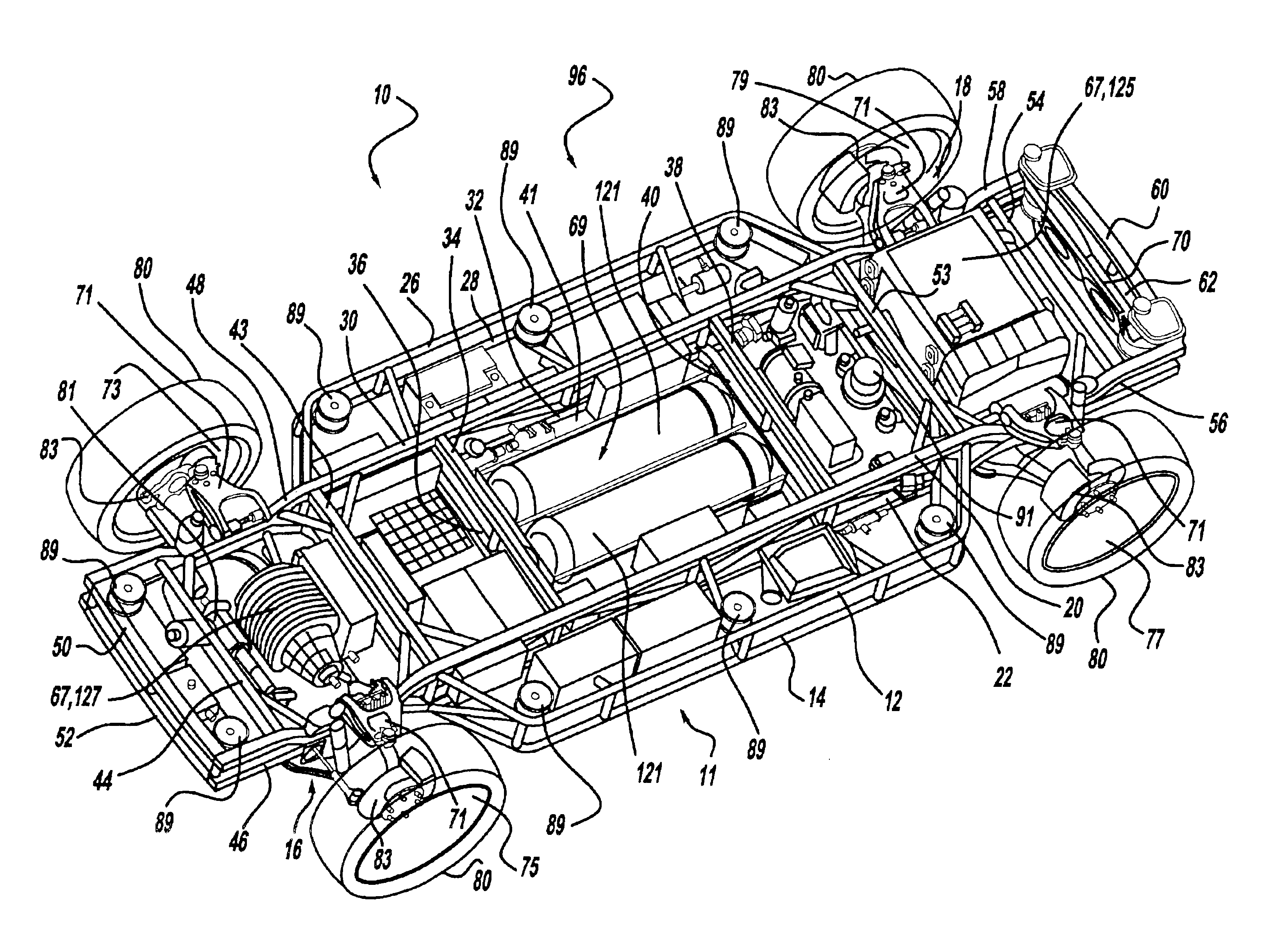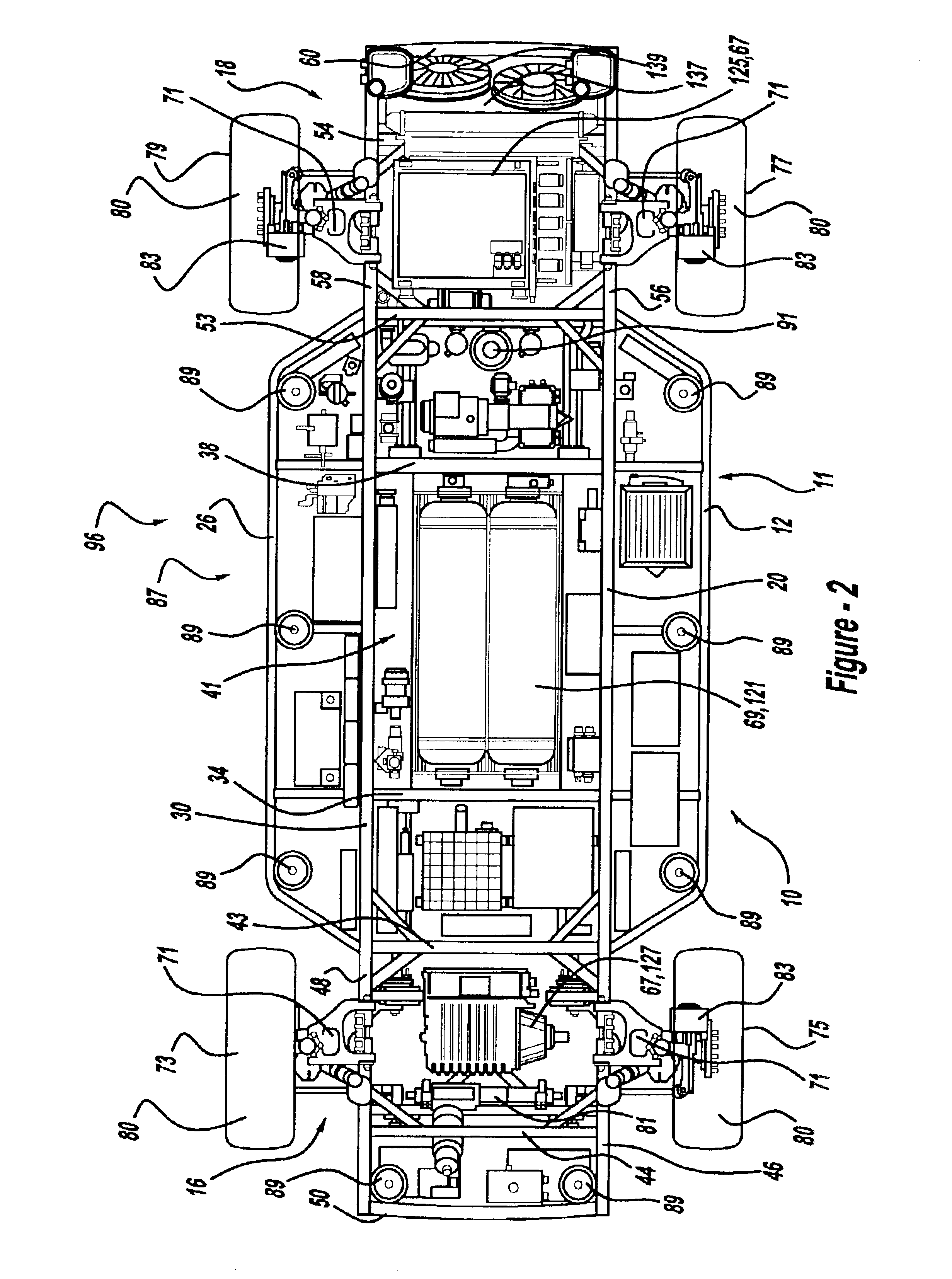Vehicle body manufacturing process
a manufacturing process and vehicle body technology, applied in the direction of steering linkages, vehicle seats, conjoint control, etc., can solve the problems of inability to use “off-the-shelf” components and linkages for new or different bodies, and the componentry of one vehicle body configuration is typically not compatible with other vehicle body configurations, so as to eliminate mechanical control linkages and simplify the interface , preferably standardized
- Summary
- Abstract
- Description
- Claims
- Application Information
AI Technical Summary
Benefits of technology
Problems solved by technology
Method used
Image
Examples
Embodiment Construction
Referring to FIG. 1, a vehicle chassis 10 in accordance with the invention, also referred to as the “rolling platform,” includes a structural frame 11. The structural frame 11 depicted in FIG. 1 comprises a series of interconnected structural elements including upper and lower side structural elements 12 and 14 that comprise a “sandwich”-like construction. Elements 12 and 14 are substantially rigid tubular (or optionally solid), members that extend longitudinally between the front and rear axle areas 16, 18, and are positioned outboard relative to similar elements 20, 22. The front and rear ends of elements 12, 14 are angled inboard, extending toward elements 20 and 22 and connecting therewith prior to entering the axle areas 16, 18. For added strength and rigidity a number of vertical and angled structural elements extend between elements 12, 14, 20 and 22. Similar to the elements 12, 14, 20 and 22, which extend along the left side of the rolling platform 10, a family of structural...
PUM
| Property | Measurement | Unit |
|---|---|---|
| height | aaaaa | aaaaa |
| power | aaaaa | aaaaa |
| height | aaaaa | aaaaa |
Abstract
Description
Claims
Application Information
 Login to View More
Login to View More - R&D
- Intellectual Property
- Life Sciences
- Materials
- Tech Scout
- Unparalleled Data Quality
- Higher Quality Content
- 60% Fewer Hallucinations
Browse by: Latest US Patents, China's latest patents, Technical Efficacy Thesaurus, Application Domain, Technology Topic, Popular Technical Reports.
© 2025 PatSnap. All rights reserved.Legal|Privacy policy|Modern Slavery Act Transparency Statement|Sitemap|About US| Contact US: help@patsnap.com



